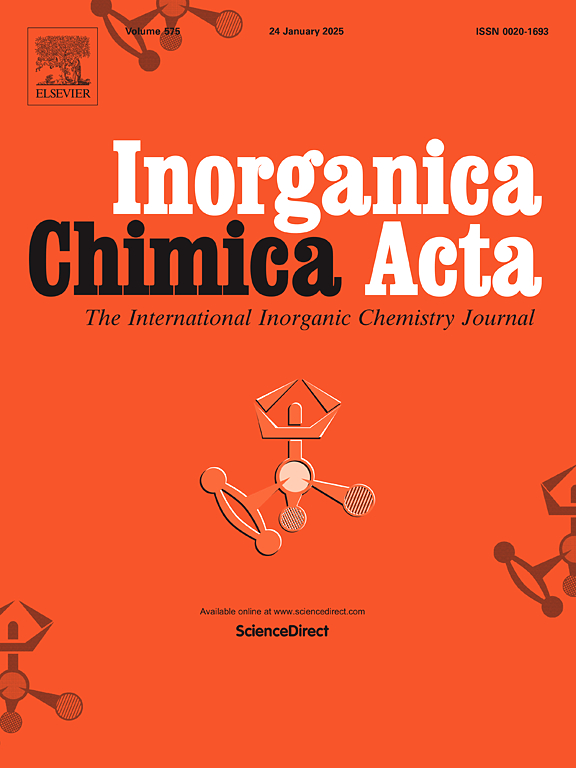A two-dimensional mixed ligands based coordination polymer of cadmium: Synthesis, single crystal structure and luminescence quenching based sensing behaviors towards Fe3+, Cr3+, Al3+ ions and TNP in aqueous phase
IF 2.7
3区 化学
Q2 CHEMISTRY, INORGANIC & NUCLEAR
引用次数: 0
Abstract
A new Cd (II)-based compound [Cd(BTCH)(L)] (BTCH = di-anionic 1,3,5-benzene tricarboxylic acid and L = 2,4,5-tri-4-pyridyl-1H-imidazole), 1, has been synthesized by hydrothermal method. The structure determined by single-crystal X-ray diffraction revealed two dimensional extended assemblies based on connectivity of Cd2+ ions with two ligands. The presence of one free carboxylic acid groups of each BTCH ligand and one non-bonded pyridine ring of each L ligand makes the two-dimensional layer structure stabilized through the hydrogen bond interactions. The compound has been characterized by powder X-ray diffraction, Fourier transform infrared (FTIR) spectroscopy and thermogravimetric analysis (TGA). Aqueous dispersion of compound 1 showed emission at 400 nm upon excitation at 300 nm. The compound 1 also exhibited photoluminescence-based sensing behaviors towards Fe3+, Al3+ and Cr3+ ions in aqueous medium based on luminescence quenching effect. However, photoluminescence studies in presence of other common metal ions showed either negligible quenching effect or moderate to low turn on effect for Ni2+, K+, Zn2+, Cd2+ Cu2+, Ca2+, Mn2+, Na+, Co2+, Fe2+, Pb2+, Mg2+ in aqueous. The limit of detection for Fe3+, Al3+, Cr3+ ions are 0.568 μM, 1.721 μM and 0.840 μM respectively. Compound 1 also showed significant quenching effect in the presence of 2,4,6-trinitrophenol (TNP) with detection limit of 0.302 μM.

求助全文
约1分钟内获得全文
求助全文
来源期刊

Inorganica Chimica Acta
化学-无机化学与核化学
CiteScore
6.00
自引率
3.60%
发文量
440
审稿时长
35 days
期刊介绍:
Inorganica Chimica Acta is an established international forum for all aspects of advanced Inorganic Chemistry. Original papers of high scientific level and interest are published in the form of Articles and Reviews.
Topics covered include:
• chemistry of the main group elements and the d- and f-block metals, including the synthesis, characterization and reactivity of coordination, organometallic, biomimetic, supramolecular coordination compounds, including associated computational studies;
• synthesis, physico-chemical properties, applications of molecule-based nano-scaled clusters and nanomaterials designed using the principles of coordination chemistry, as well as coordination polymers (CPs), metal-organic frameworks (MOFs), metal-organic polyhedra (MPOs);
• reaction mechanisms and physico-chemical investigations computational studies of metalloenzymes and their models;
• applications of inorganic compounds, metallodrugs and molecule-based materials.
Papers composed primarily of structural reports will typically not be considered for publication.
 求助内容:
求助内容: 应助结果提醒方式:
应助结果提醒方式:


